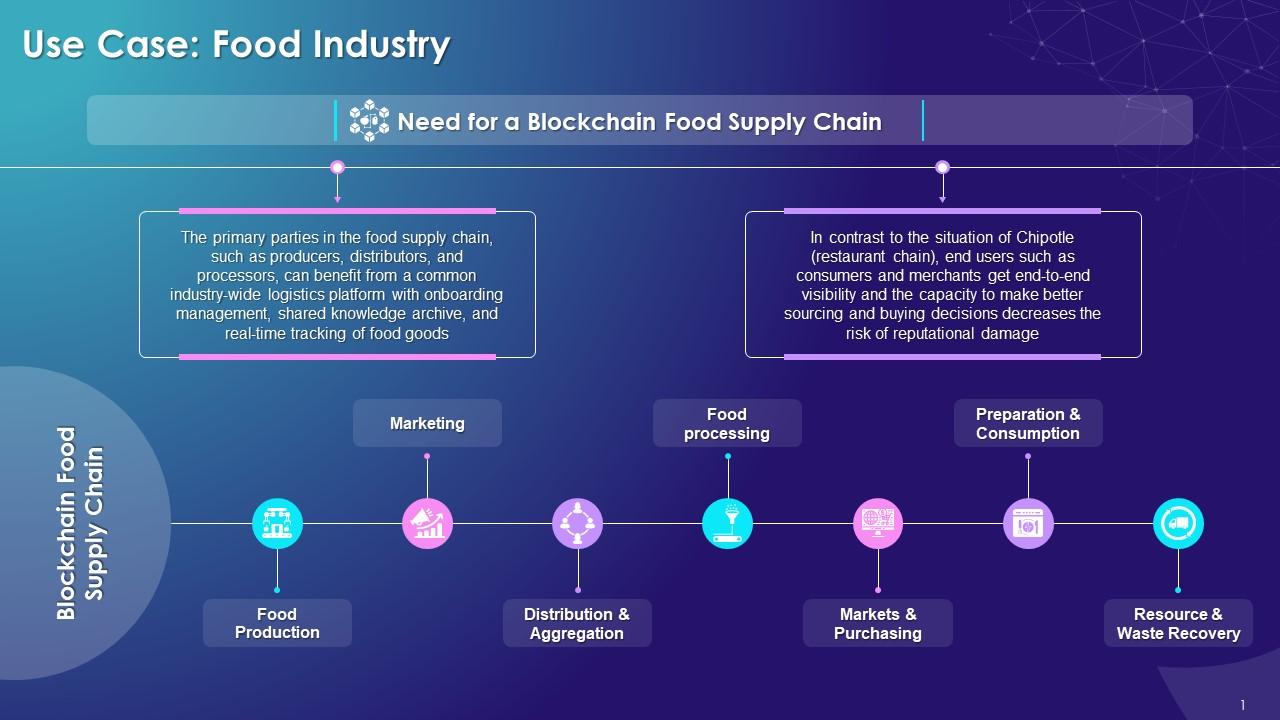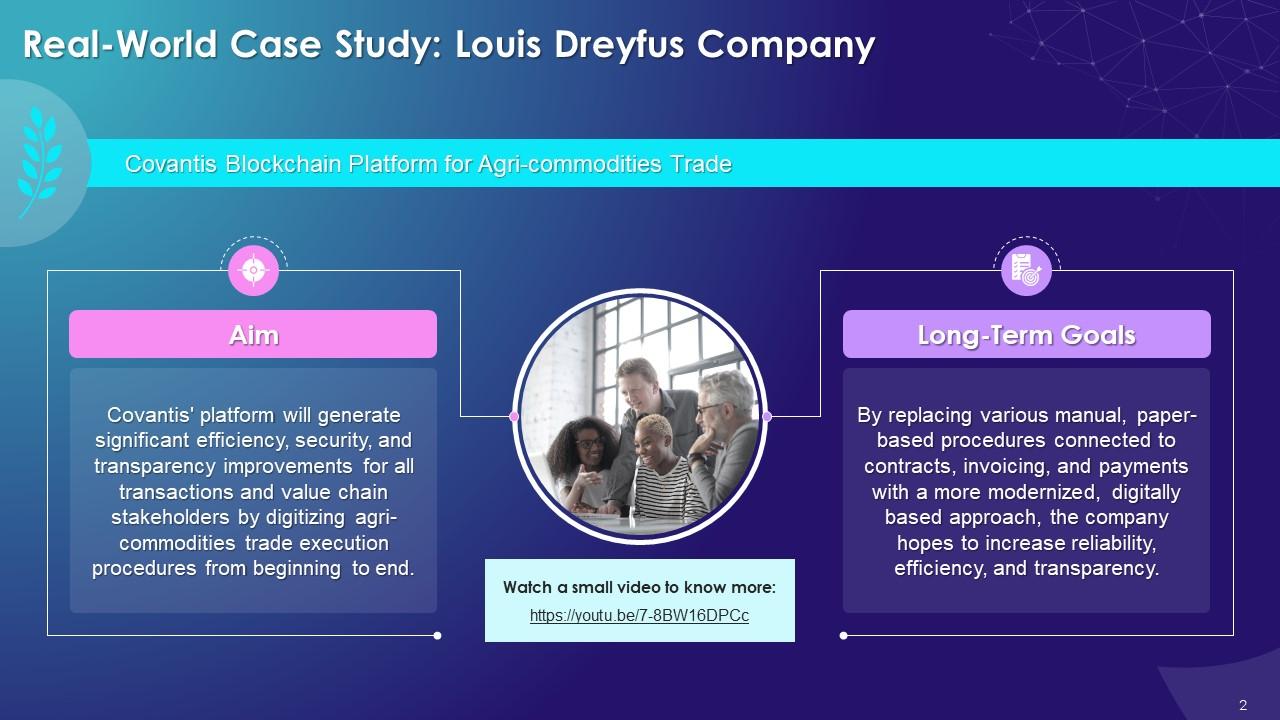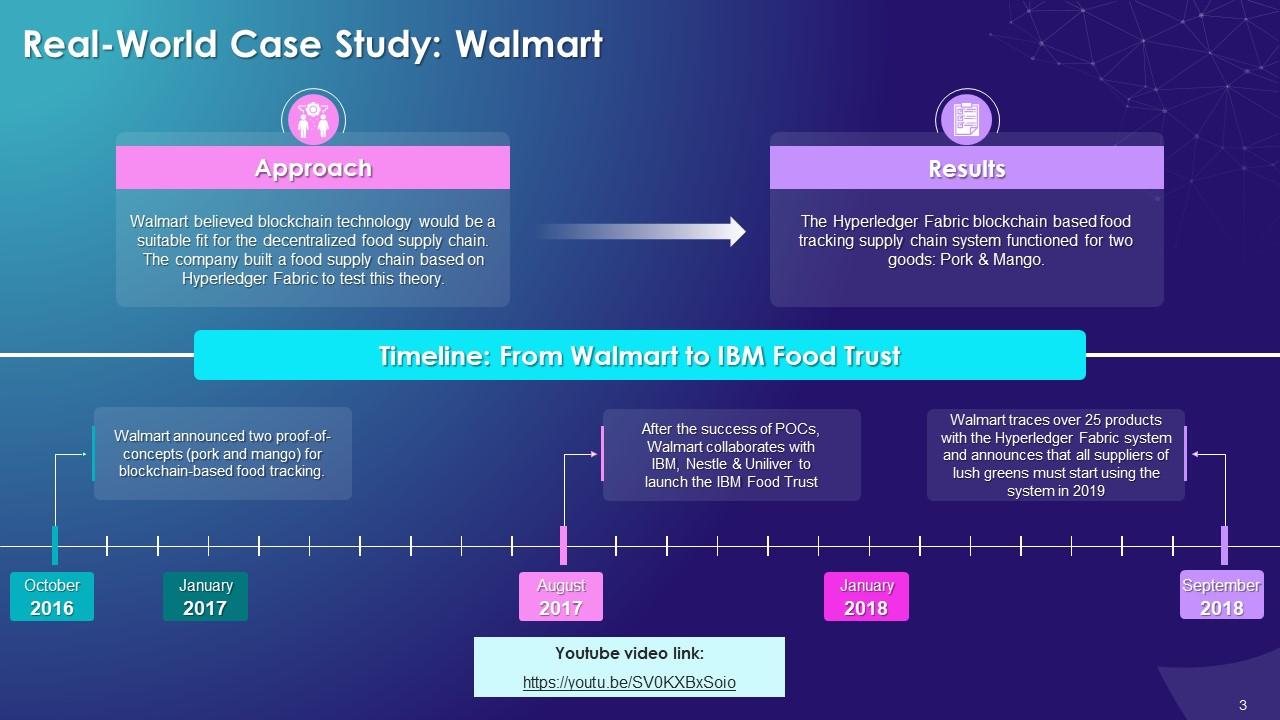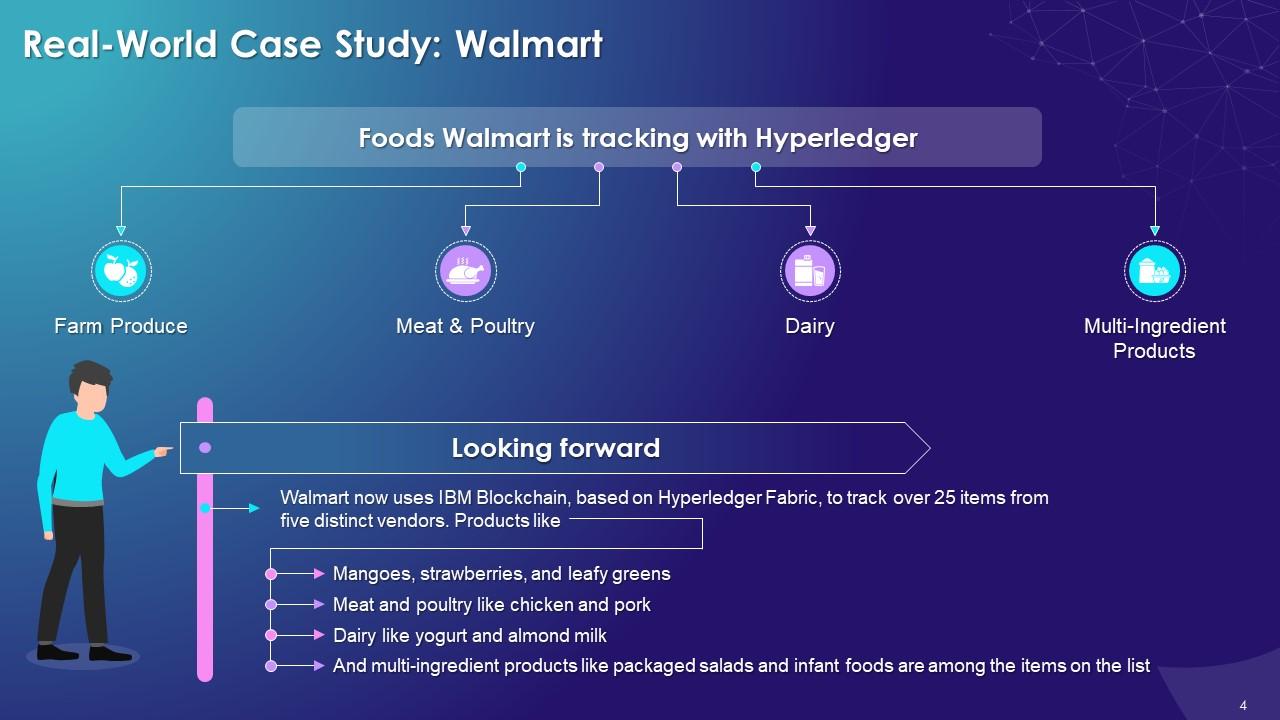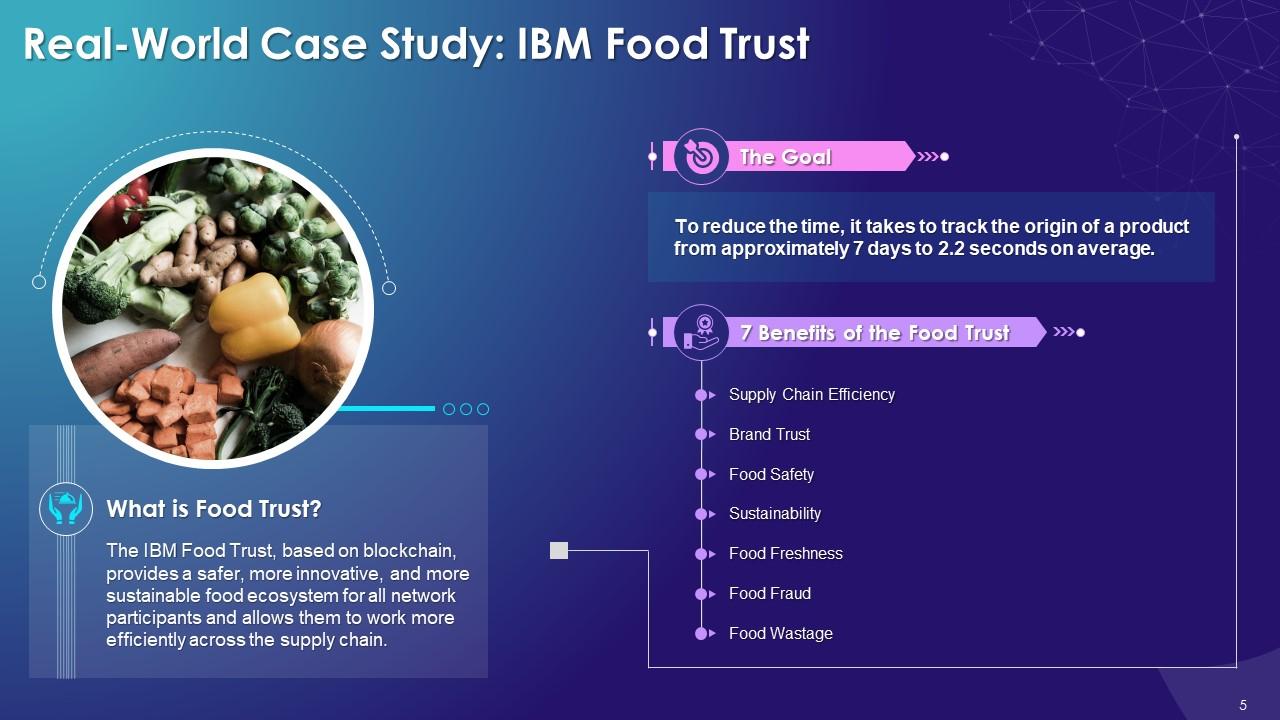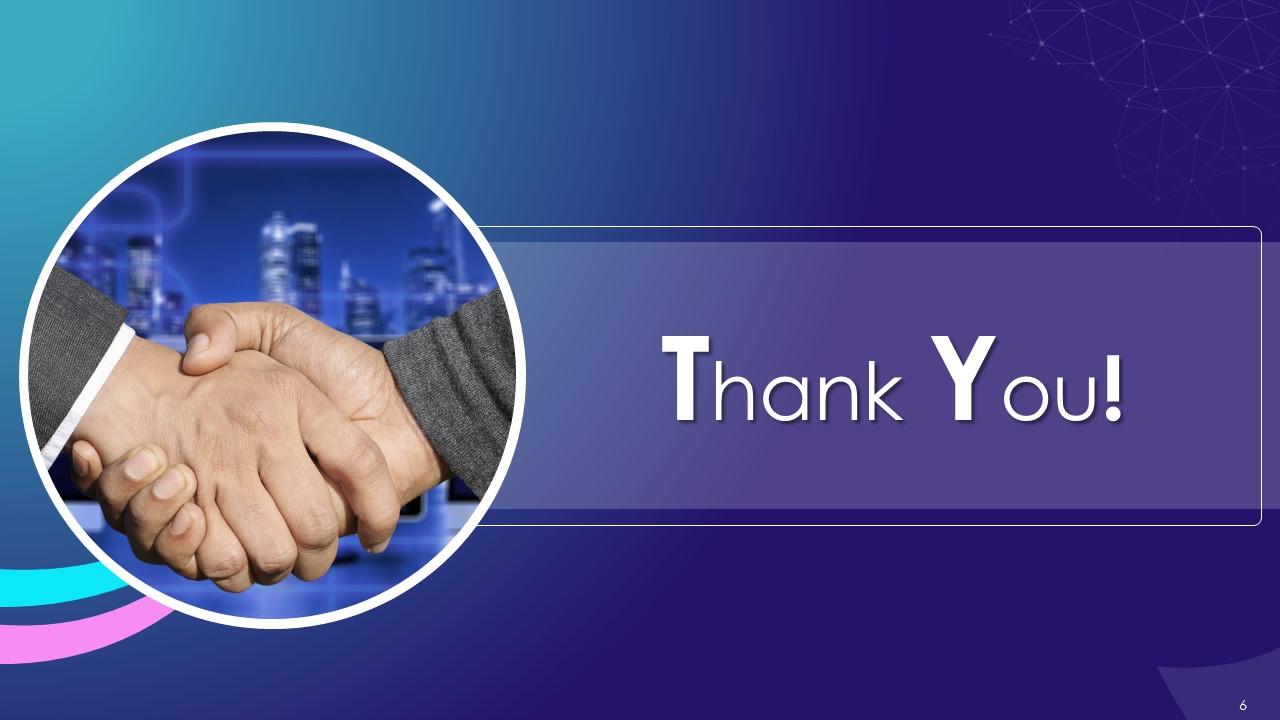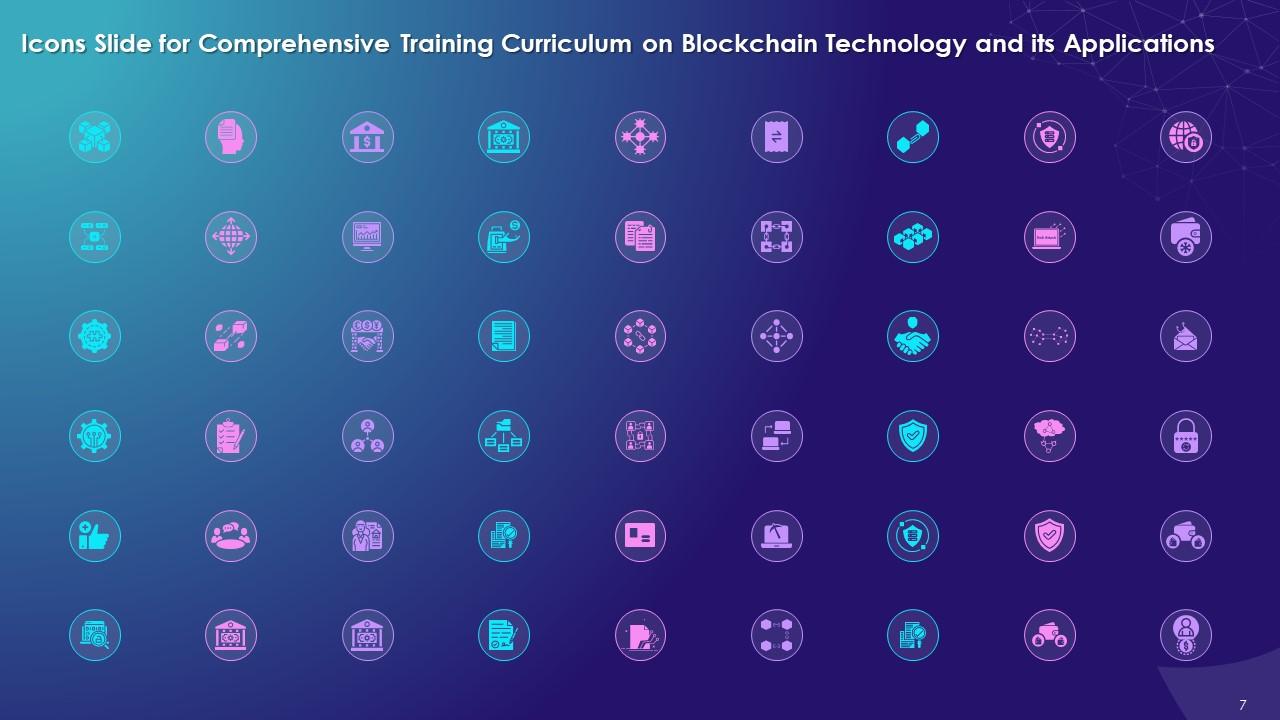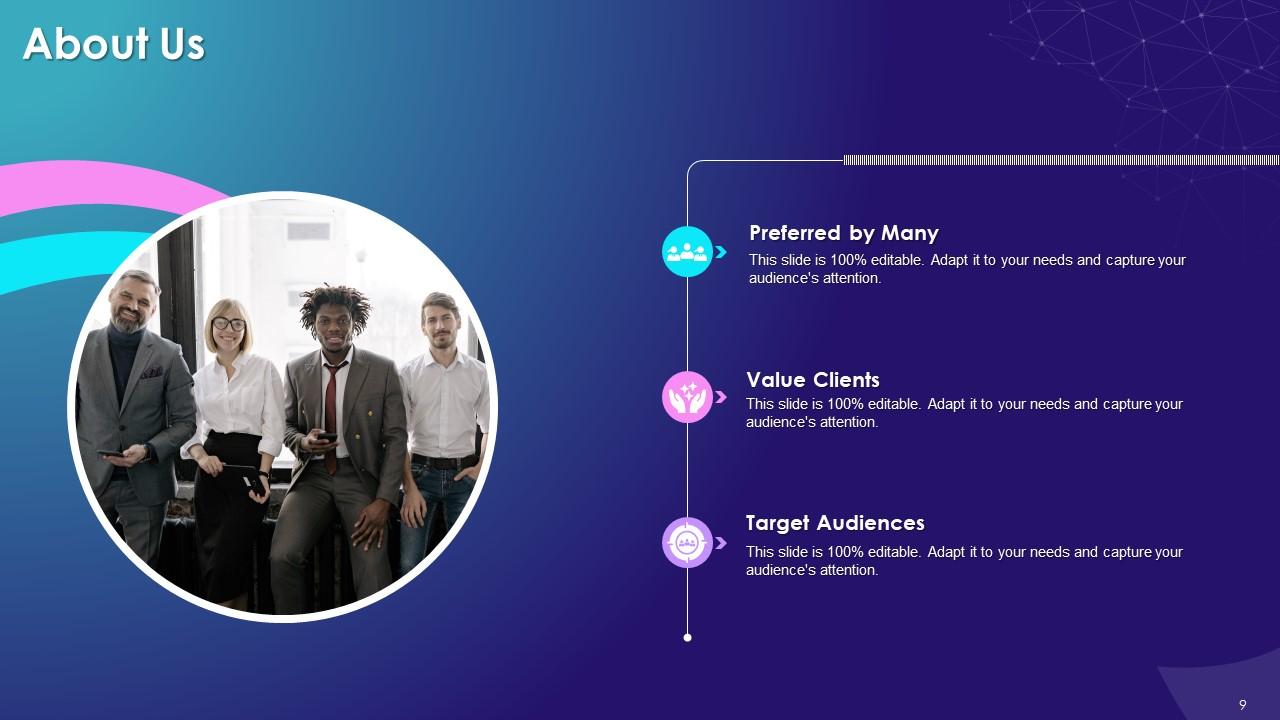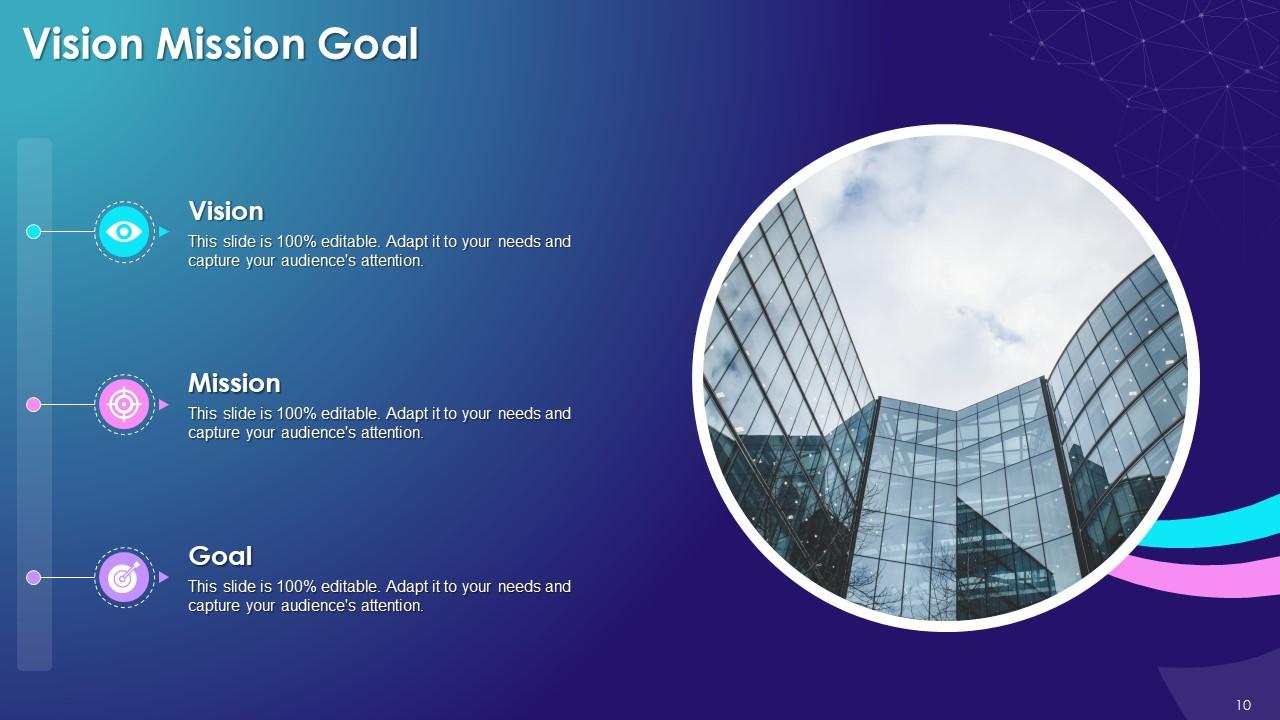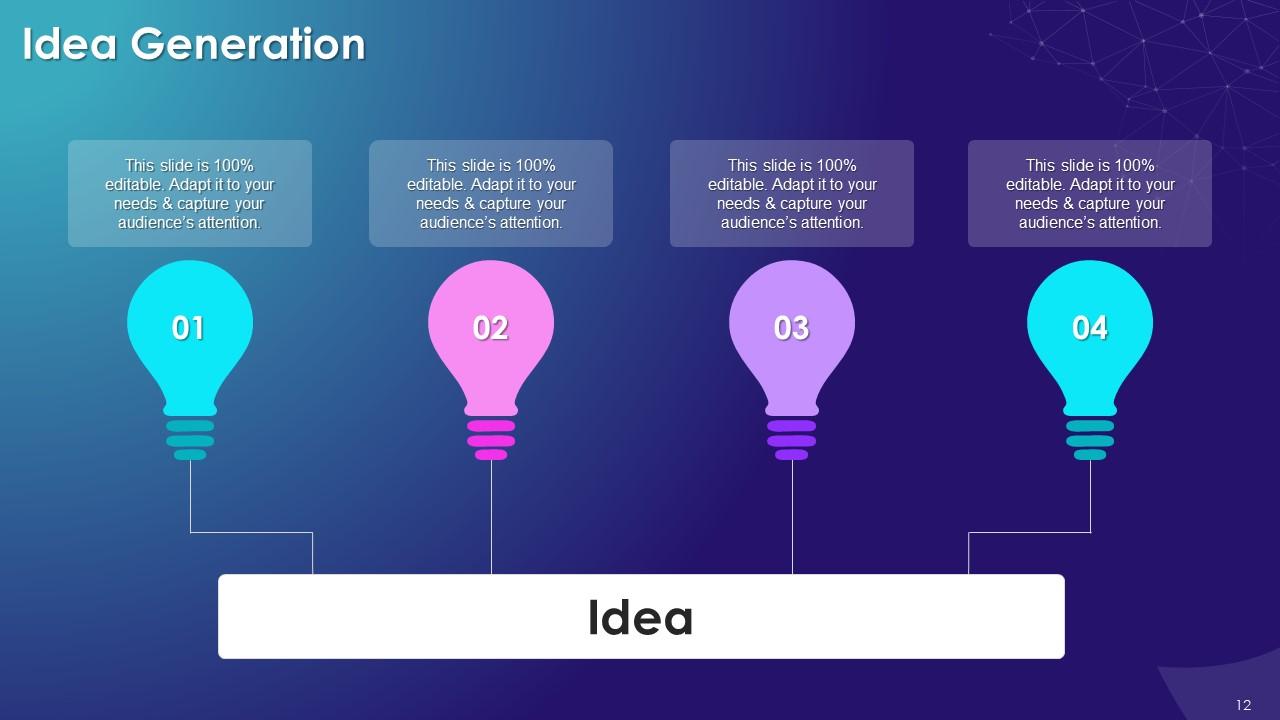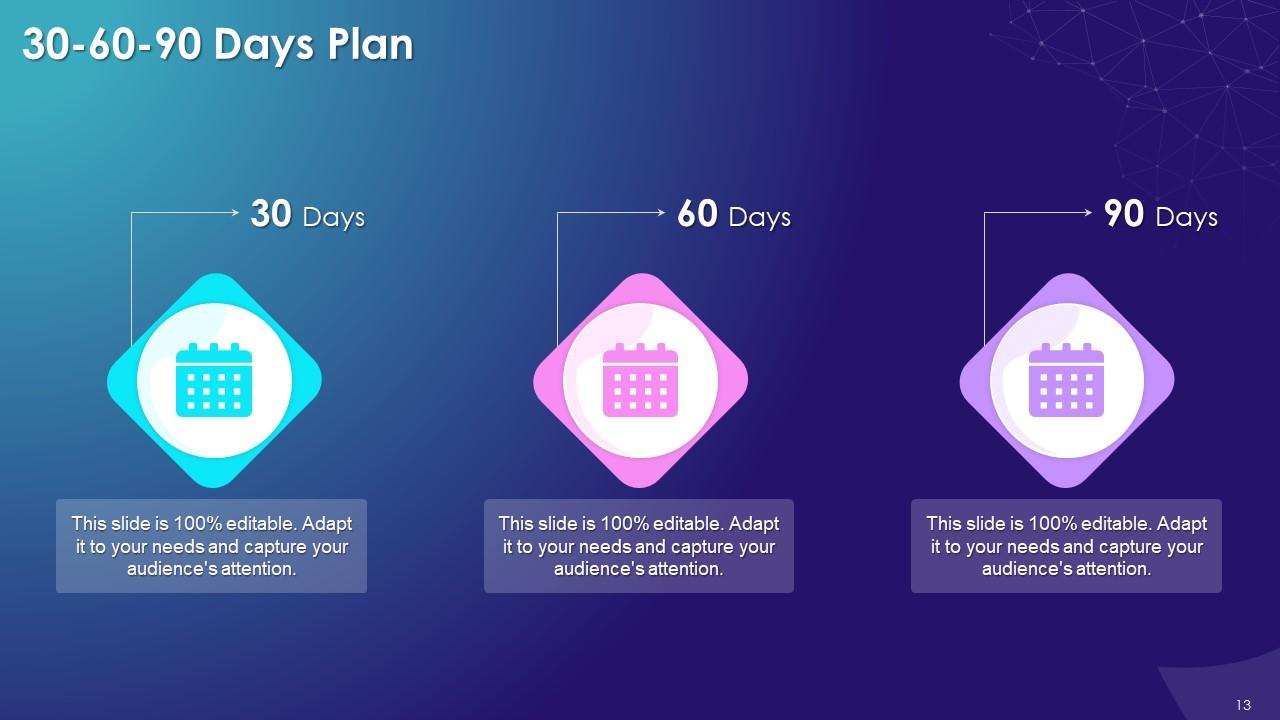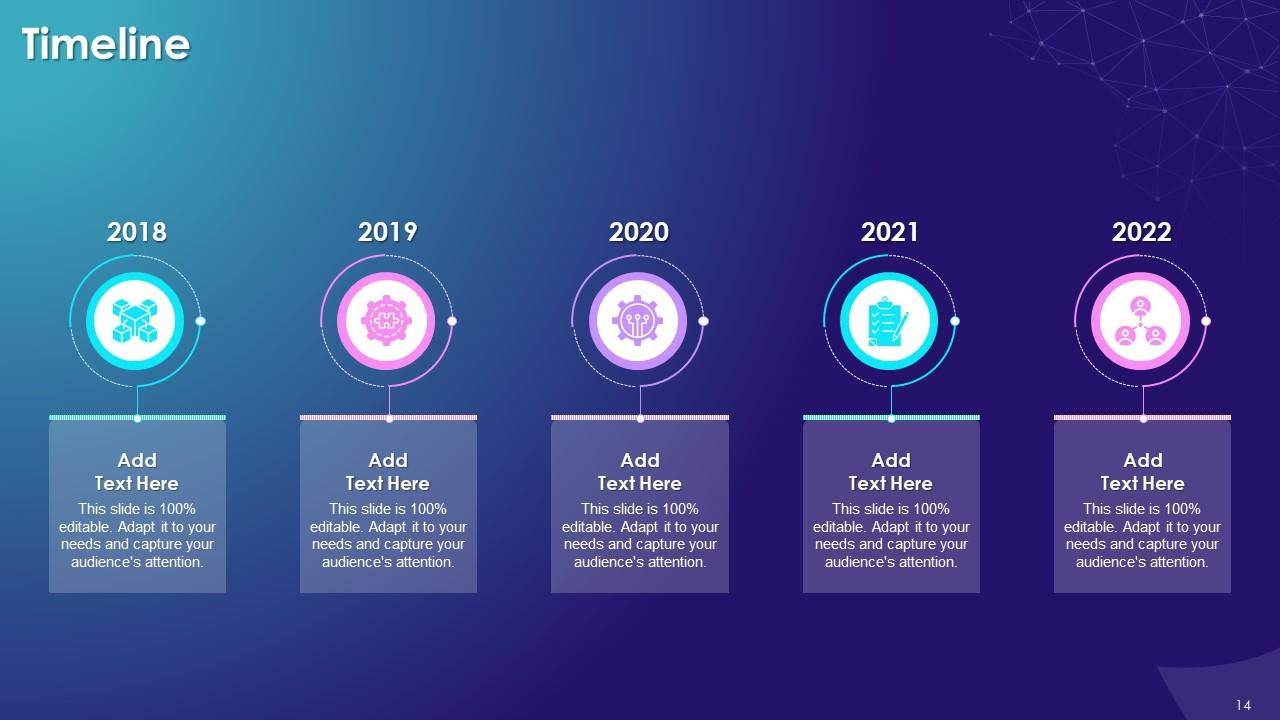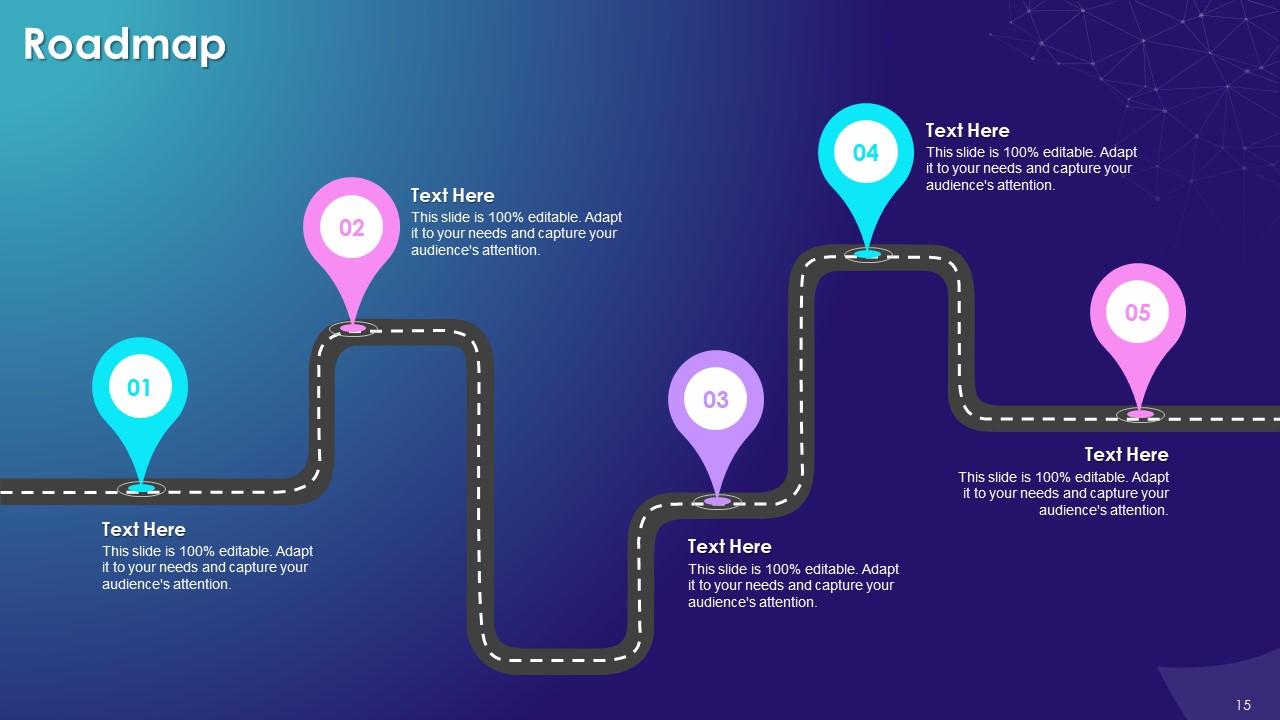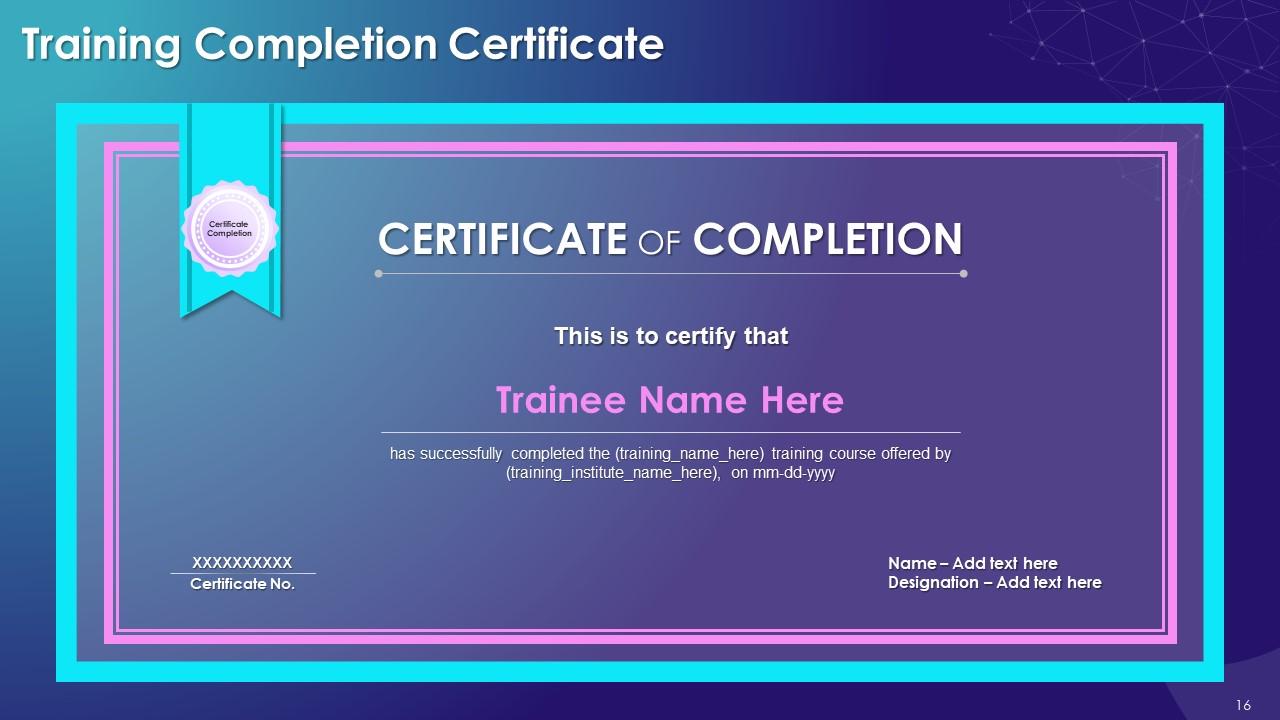Case Studies On Blockchain Technology Applications In Supply Chain Training Ppt
This set of slides contains case studies to showcase blockchain technology applications to improve food supply chains efficiency.
This set of slides contains case studies to showcase blockchain technology applications to improve food supply chains effic..
- Google Slides is a new FREE Presentation software from Google.
- All our content is 100% compatible with Google Slides.
- Just download our designs, and upload them to Google Slides and they will work automatically.
- Amaze your audience with SlideTeam and Google Slides.
-
Want Changes to This PPT Slide? Check out our Presentation Design Services
- WideScreen Aspect ratio is becoming a very popular format. When you download this product, the downloaded ZIP will contain this product in both standard and widescreen format.
-

- Some older products that we have may only be in standard format, but they can easily be converted to widescreen.
- To do this, please open the SlideTeam product in Powerpoint, and go to
- Design ( On the top bar) -> Page Setup -> and select "On-screen Show (16:9)” in the drop down for "Slides Sized for".
- The slide or theme will change to widescreen, and all graphics will adjust automatically. You can similarly convert our content to any other desired screen aspect ratio.
Compatible With Google Slides

Get This In WideScreen
You must be logged in to download this presentation.
PowerPoint presentation slides
Presenting Case Studies on Blockchain Technology Applications in Supply Chain. This slide is well crafted and designed by our PowerPoint specialists. This PPT presentation is thoroughly researched by the experts,and every slide consists of appropriate content. You can add or delete the content as per your need.
People who downloaded this PowerPoint presentation also viewed the following :
Content of this Powerpoint Presentation
Slide 1
This slide illustrates the need for a blockchain based food supply chain and how it can be used within the food industry to improve efficiency and effectiveness.
Instructor’s Notes:
Blockchain Food Supply Chain: It is considerably more linked and visible, allowing for a high level of visibility from the farmer to the end-user. Blockchains can help with new operations such as extensive data analysis and automated data acquisition in addition to fundamental production, distribution, and retailing.
Slide 2
The creation of a revolutionary blockchain platform for world trade execution is part of LDC's collaborative effort with industry peers to modernize global agri-commodities trade operations. The company finished its pilot programme effectively and has now implemented blockchain for traceability purposes.
Instructor’s Notes:
- Aim: ADM, Bunge, Cargill, and LDC are first focusing on technologies to automate grain and oilseed post-trade execution activities, which are a very laborious and costly aspect of the supply chain. With the industry spending considerable sums of money every year sending papers around the world, lower document processing times, shorter wait times, and improved end-to-end contracting visibility would all result from eliminating inefficiencies.
- Future Goals:
- Greater visibility throughout the supply chain movements supporting transactions, resulting in lower costs associated with shipping, storage, and wait periods
- Improved quality and dependability of documents and data, with decreased review time and smooth transmission of transaction data to customers
- Standardized data employing technologies available to all participants, resulting in increased efficiencies
- Increased efficiency and transparency, allowing the company to serve its customers and consumers better
- Compatibility with various apps providing electronic and digital solutions, giving an end-to-end experience for users
Slide 3
This slide illustrates how Walmart recognized its need to make the company’s food supply chain blockchain based. The slide talks about the approach of the organization towards the new technology and the two cases of pork and mangoes to test the theory based on Hyperledger Fabric. It also depicts how the concept of IBM food trust in collaboration with Walmart came into being.
Instructor’s Notes:
- Approach: To test the system, Walmart and IBM collaborated on two proof-of-concept initiatives. One experiment intended to track mangoes sold in Walmart stores in the United States, while the other was to track pork sold in Walmart stores in China
- Results: It enabled the uploading of certificates of integrity to the blockchain for pork in China, providing additional credibility to a system where trust was previously a significant concern. And the time it took to track the provenance of mangoes in the United States fell from 7 days to 2.2 seconds!
Slide 4
This slide lists the food products that Walmart is tracking with the Hyperledger Fabric these days. It also talks about the future goals of the company in collaboration with IBM Blockchain to track food products.
Instructor’s Notes:
Looking forward: In collaboration with IBM Food Trust, Walmart is expanding the system to new items and sectors. In fact, the firm just announced that it would begin mandating all of its fresh leafy greens (such as salad and spinach) suppliers to use the system to track their products.
Slide 5
This slide defines IBM’s Food Trust and its main aim behind it. It also lists the features that enhance the food supply chain network, such as supply chain efficiency, brand trust, food safety, sustainability, food freshness, fraud, and wastage.
Instructor’s Notes:
What is food trust: The food trust system provides authorized users instant access to actionable data on the food supply chain, from farm to store to consumer. Once uploaded on the blockchain, any individual food item's whole history and current location, as well as associated information such as licenses, test results, and temperature data, are instantly available.
Benefits:
- Supply Chain Efficiency: The inefficiency of the food industry is a worldwide issue, and there are endless ways to lose efficiency and revenues when there are so many participants. A blockchain-powered shared food supply chain allows supply chain participants to better communicate with one another, operating more effectively and embracing change
- Brand Trust: Customers have more options than ever before regarding where they buy their food. In such a cutthroat food sector, brand distinctiveness is critical to being at the top of consumers' minds while making purchase decisions. Because blockchain allows for complete transparency, consumers, manufacturers, and distributors all have faith and trust in the firms from whom we buy and consume our food
- Food Safety: Food recalls are a significant safety issue and a danger to profits. Participants in a digital food system have access to data that can help them enhance food safety and become more proactive in improving the food network in general
- Sustainability: Consumers across the globe want information about their food. Therefore, sustainability is no longer a perk; it is now a need for both customers and future business models. Blockchain is raising awareness of sustainability options and practices throughout the food chain
- Food Freshness: The desire for fresh food isn't just a passing craze. Retailers will be able to deliver fresher options (with longer shelf lives) to their customers due to blockchain's complete transparency throughout the food ecosystem, resulting in lower product loss and higher margins
- Food Fraud: Food fraud continues to thrive, owing to the complexity of today's global food chain. The visibility across the network eliminates the possibility of food-chain fraud
- Food Wastage: The worldwide mission to eliminate food waste has gathered public support, but there is still a long way to go. Participants in the network can now better track the amount of food wasted and retrieved thanks to a digital food system
Case Studies On Blockchain Technology Applications In Supply Chain Training Ppt with all 21 slides:
Use our Case Studies On Blockchain Technology Applications In Supply Chain Training Ppt to effectively help you save your valuable time. They are readymade to fit into any presentation structure.
-
Great product with effective design. Helped a lot in our corporate presentations. Easy to edit and stunning visuals.
-
Enough space for editing and adding your own content.


